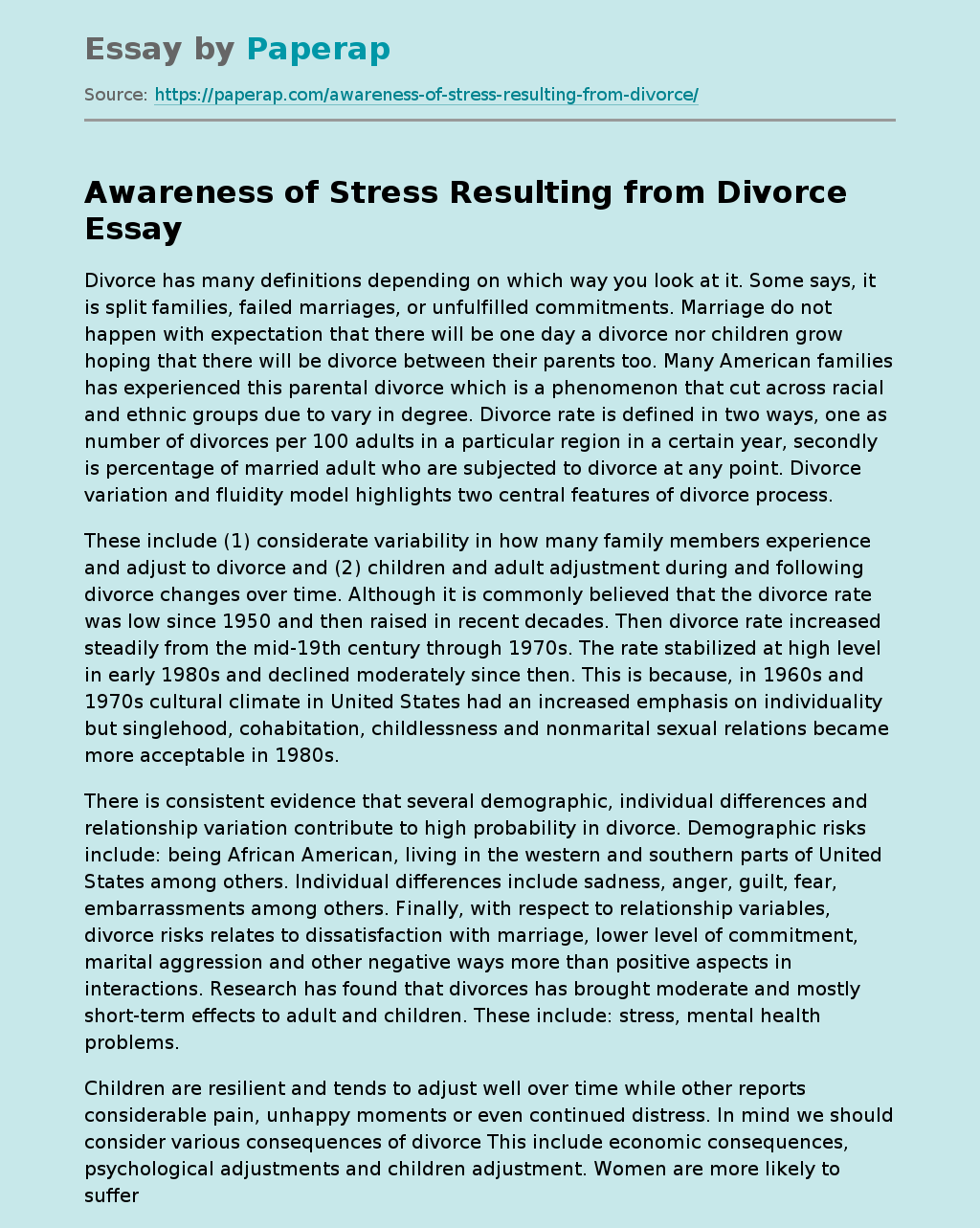Awareness of Stress Resulting from Divorce
Divorce has many definitions depending on which way you look at it. Some says, it is split families, failed marriages, or unfulfilled commitments. Marriage do not happen with expectation that there will be one day a divorce nor children grow hoping that there will be divorce between their parents too. Many American families has experienced this parental divorce which is a phenomenon that cut across racial and ethnic groups due to vary in degree. Divorce rate is defined in two ways, one as number of divorces per 100 adults in a particular region in a certain year, secondly is percentage of married adult who are subjected to divorce at any point.
Divorce variation and fluidity model highlights two central features of divorce process.
These include (1) considerate variability in how many family members experience and adjust to divorce and (2) children and adult adjustment during and following divorce changes over time. Although it is commonly believed that the divorce rate was low since 1950 and then raised in recent decades.
Then divorce rate increased steadily from the mid-19th century through 1970s. The rate stabilized at high level in early 1980s and declined moderately since then. This is because, in 1960s and 1970s cultural climate in United States had an increased emphasis on individuality but singlehood, cohabitation, childlessness and nonmarital sexual relations became more acceptable in 1980s.
There is consistent evidence that several demographic, individual differences and relationship variation contribute to high probability in divorce. Demographic risks include: being African American, living in the western and southern parts of United States among others.
Individual differences include sadness, anger, guilt, fear, embarrassments among others. Finally, with respect to relationship variables, divorce risks relates to dissatisfaction with marriage, lower level of commitment, marital aggression and other negative ways more than positive aspects in interactions. Research has found that divorces has brought moderate and mostly short-term effects to adult and children. These include: stress, mental health problems.
Children are resilient and tends to adjust well over time while other reports considerable pain, unhappy moments or even continued distress. In mind we should consider various consequences of divorce This include economic consequences, psychological adjustments and children adjustment. Women are more likely to suffer from economical adjustments after divorce. This is because most marriages and divorces involve children and mother continue to devote substantially than father to caring for children. For instance, before divorce we used to live in a fairly well-off nice house and getting more of what we wanted. After divorce, my mother, my sister and I moved into a small 2bedroom apartment that was not even close to a as nice as our former house. Evidence suggests that in many case children and adolescent experiences difficulties for 1 to 2 years during the period leading up to and immediately after parental separation.
In creating awareness of stress resulting from divorce, attention has been focussed on helping children adjust more through educational programs that prepare parents to help their children cope with divorce. However, client satisfaction does not necessarily mean that these programs are successful in fostering behavioural changes. Divorce mediation is based on the principal of cooperative negotiation which views parties as disputants who compete with each other. Mediation has critics, first mediator is said not to take man and woman power differential into account and secondly, mediation is not appropriate strategy of some couple who cannot speak out their problems for them to be solved.
Awareness of Stress Resulting from Divorce. (2021, Dec 14). Retrieved from https://paperap.com/awareness-of-stress-resulting-from-divorce/

